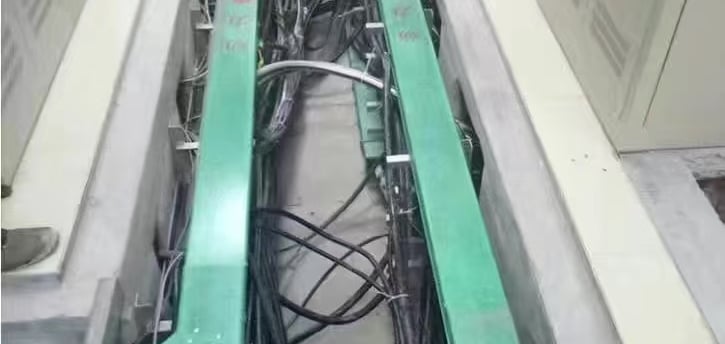FRP Cable Tray vs Ordinary Metal Cable Tray
Discover the key differences between FRP cable tray and ordinary metal cable trays. Learn about their structures, materials, and installation options, including trough, tray, ladder, and grid type...
9/29/20242 min read


Introduction to Cable Trays
In the world of electrical installations, cable trays play a pivotal role in organizing and managing cables. They facilitate both the support and protection of electrical wiring systems. Among the various types of cable trays available, this article focuses on distinguishing between Fiberglass Reinforced Plastic (FRP) cable trays and ordinary cable trays, primarily made of metal.
What Are FRP Cable Trays?
FRP cable trays are innovative structures specifically designed to offer enhanced durability, strength, and corrosion resistance. Made primarily from fiberglass, these trays provide a lightweight alternative to traditional materials. This unique composition enables FRP cable trays to withstand harsh environmental conditions, making them primarily suitable for industries such as chemical processing, marine installations, and power generation.
Comparative Analysis: FRP vs. Ordinary Cable Trays
The most notable difference between FRP cable trays and ordinary cable trays lies in the material used for their construction. Ordinary cable trays, commonly referred to as metal cable trays, are predominantly made from steel or aluminum. While metal trays are robust and widely used, they suffer from limitations, including susceptibility to corrosion and a tendency to degrade over time when exposed to various chemicals.
In contrast, the composition of FRP cabling systems grants them inherent resistance to chemicals, moisture, and ultraviolet (UV) light, significantly enhancing their operational lifespan. Furthermore, the installation of FRP trays is often more straightforward due to their lighter weight, resulting in reduced labor costs and simplified handling.
Additionally, cable trays are categorized into various structures, such as trough type, tray type, ladder type, and grid type. Each type serves a specific purpose and comes with brackets and installation accessories that complement its structure. Importantly, both FRP and ordinary cable trays can be erected independently or attached to various buildings or pipe gallery brackets.
Advantages of FRP Cable Trays
FRP cable trays present several advantages over traditional metal options. Their corrosion resistance ensures that they remain operational even in the most challenging environments, leading to reduced maintenance costs over time. Moreover, the aesthetic appeal of FRP trays makes them a favored choice for modern installations, aligning with the contemporary emphasis on visual design.
Another critical advantage is their flexible configuration ability, allowing customization to meet the specific needs of a project. This adaptability is essential in electrical installations, where the layout can often change based on evolving requirements.
Conclusion
In conclusion, the choice between FRP cable trays and ordinary cable trays is influenced by various factors, including the application, environment, and project requirements. While ordinary cable trays made of metal have their merits, the numerous advantages provided by FRP cable trays make them a compelling alternative for industries seeking durability, corrosion resistance, and design flexibility. By understanding the distinctions between these two types of cable trays, businesses can make informed decisions that align with their operational goals.
Songyin Kunshen
上海松隐坤申贸易有限公司
Quality, innovation, direct customer relationships, safer, efficient, sustainable
© 2024. All rights reserved.


